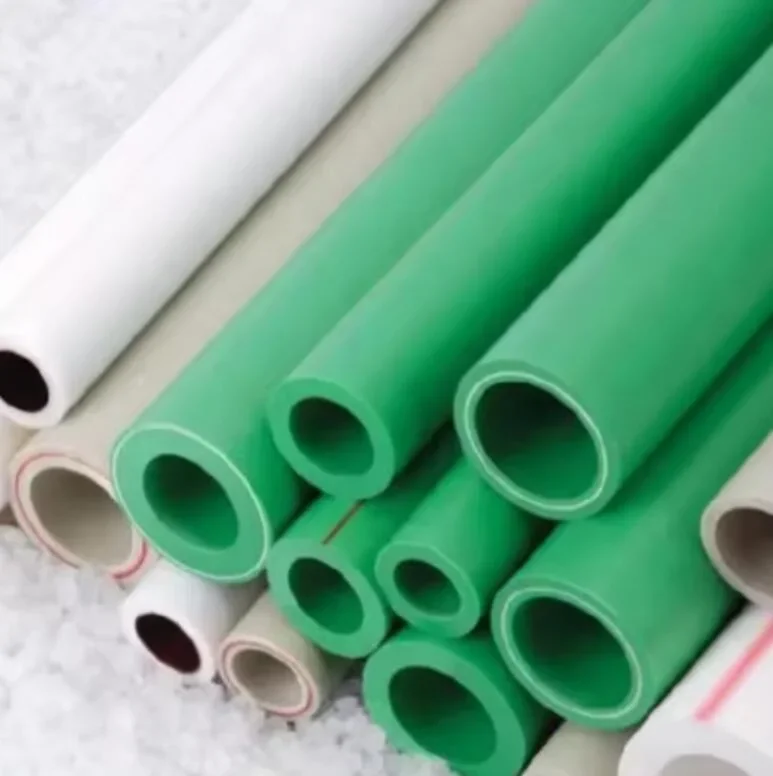When it comes to plumbing systems, choosing the right pipes is crucial for ensuring the efficiency and longevity of the system. One popular choice among homeowners and professionals alike is the PPR (Polypropylene Random Copolymer) pipe. In this blog post, Hangyi will explore the various features of PPR hot and cold water pipe for sale, shedding light on why they are a preferred option for plumbing installations.
1. High Temperature Resistance:
One of the standout features of PPR hot and cold water pipes is their exceptional resistance to high temperatures. PPR pipes can withstand temperatures up to 85°C, making them suitable for both hot and cold water applications. This high-temperature resistance ensures that the pipes remain durable and reliable even under extreme conditions, reducing the risk of leaks or bursts.
2. Corrosion Resistance:
PPR pipes are highly resistant to corrosion, making them an ideal choice for plumbing systems. Unlike metal pipes, PPR pipes do not rust or corrode when exposed to water or other chemicals commonly found in plumbing systems. This corrosion resistance ensures that the pipes maintain their structural integrity over time, minimizing the need for frequent repairs or replacements.
3. Low Thermal Conductivity:
Another notable feature of PPR hot and cold water pipes is their low thermal conductivity. This means that PPR pipes have excellent insulation properties, preventing heat loss or gain in the water flowing through them. As a result, PPR pipes help maintain the desired temperature of the water, reducing energy consumption and providing cost savings in the long run.
4. Smooth Inner Surface:
PPR pipes have a smooth inner surface, which offers several advantages. Firstly, the smooth surface minimizes friction, allowing for a smooth flow of water and reducing pressure losses. This ensures efficient water distribution throughout the plumbing system. Secondly, the smooth surface prevents the accumulation of sediment or deposits, reducing the risk of clogs and blockages. This feature makes PPR pipes easy to clean and maintain, ensuring a consistent water flow.

5. Lightweight and Easy to Install:
Compared to traditional metal pipes, PPR hot and cold water pipes are lightweight and easy to handle. This makes them convenient to transport and install, saving time and effort during the plumbing installation process. Additionally, the flexibility of PPR pipes allows for easy bending and shaping, enabling seamless installation around corners and obstacles.
6. Longevity and Durability:
PPR pipes are known for their longevity and durability. With proper installation and maintenance, these pipes can last for several decades without any significant degradation in performance. The robustness of PPR pipes ensures that they can withstand high pressure and external impacts, making them suitable for both residential and commercial plumbing applications.
7. Hygienic and Safe:
When it comes to water supply systems, hygiene and safety are of utmost importance. PPR hot and cold water pipes are non-toxic and do not release harmful substances into the water. They are also resistant to bacterial growth, ensuring the delivery of clean and safe water to households and buildings. This feature makes PPR pipes an excellent choice for applications where water quality is a priority.
Conclusion:
PPR hot and cold water pipes offer a range of features and benefits that make them a preferred choice for plumbing installations. Their high-temperature resistance, corrosion resistance, low thermal conductivity, smooth inner surface, lightweight nature, longevity, and hygienic properties make them an excellent investment for both residential and commercial plumbing systems. By choosing PPR pipes, homeowners and professionals can ensure a reliable and efficient water supply system that will stand the test of time.
https://www.hangyipipe.com/Features-of-PPR-hot-and-cold-water-pipe.html
Hangyi
sales@hangeasepipes.com
